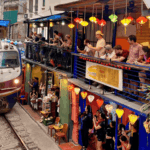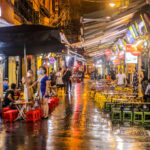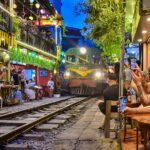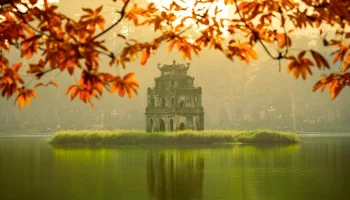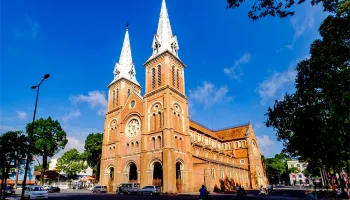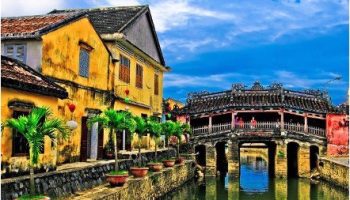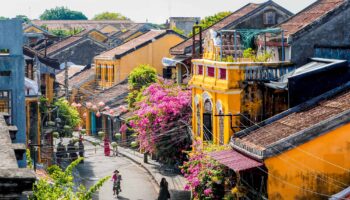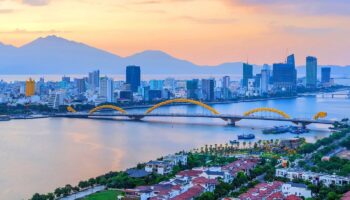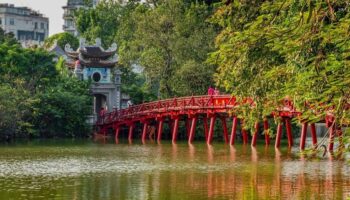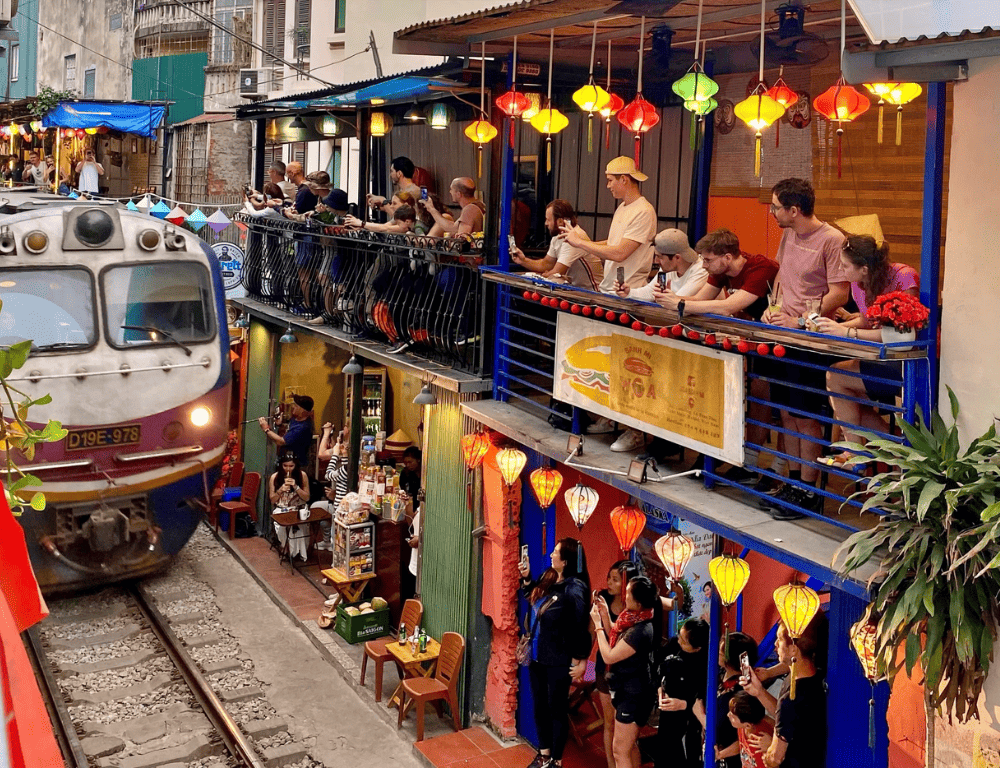
Hanoi 36 Streets: A Living Chronicle of Vietnam’s Ancient Capital
What makes the Hanoi 36 Streets unique is not only their historical depth but also the living continuity of tradition. Despite the city’s modernization, these narrow alleys remain vibrant with daily trade, ancient temples hidden between colonial façades, and the scent of freshly brewed coffee mingling with incense smoke.
Table of Contents
ToggleThe Story Behind Hanoi’s 36 Streets
Origins in Dynasty-Era Trade Guilds
The history of Hanoi 36 streets dates to the Ly and Tran dynasties (11th-14th centuries), when skilled artisans throughout Vietnam gathered in Thang Long (ancient Hanoi) forming specialized trade guilds. Each guild concentrated on particular crafts, giving birth to streets named after their trades, Hang Bac (Silver Street) for silversmiths, Hang Gai (Silk Street) for silk merchants, Hang Ma (Paper Street) for ceremonial decorations.
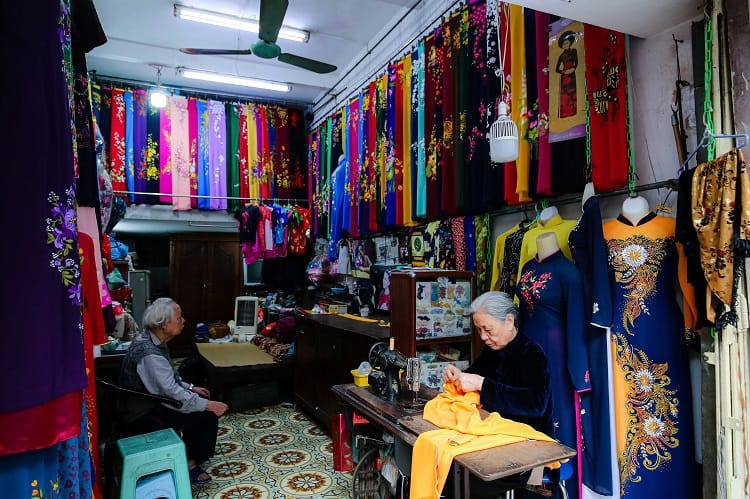
The Symbolic Number
The term “36 streets Hanoi” doesn’t refer to exact quantities. Historically, the area encompassed approximately 36 guilds, though it has expanded to over 70 streets through centuries of growth. The number 36 likely held symbolic significance, derived from nine (symbol of prosperity in Vietnamese numerology) multiplied by four cardinal directions, representing completeness and balance.
Living Heritage in Modern Context
Even today, Hanoi 36 streets embody the city’s enduring charm, blending heritage with modern life in ways that preserve tradition while embracing contemporary evolution. Hang Bac still glitters with jewelry shops alongside boutique hotels, while Hang Gai has transformed from selling dyed silk to offering high-end fabrics and custom tailoring services catering to international clientele.
>> Discover more: Train Street Hanoi: Where Everyday Life Meets Pure Wonder in Vietnam’s Capital
Signature Streets and Their Stories
Every street within Hanoi 36 streets tells distinctive stories, delicate balances between history, craftsmanship, and modern charm where tradition and transformation coexist harmoniously.
Hang Bac (Silver Street): Gleaming Heritage
Once home to Hanoi’s finest silversmiths, Hang Bac has shimmered with hammer sounds and handcrafted jewelry sparkle since the 15th century. Today, the street retains reputations as Vietnam’s jewelry trade heart while welcoming charming boutiques and contemporary cafés that blend seamlessly with historical façades.
- Traditional jewelry workshops maintaining centuries-old techniques
- Modern boutique shops offering updated designs with traditional craftsmanship
- Cafés and restaurants creating social spaces within historic structures
- Mix of local customers and international tourists seeking authentic craftsmanship
Hang Gai (Silk Street): Textile Excellence
Known universally as Silk Street, Hang Gai has long been destinations for exquisite silk fabrics and tailor-made áo dài. Here, time slows as visitors browse delicate textiles, visit local tailor shops, or explore art galleries housed within old colonial buildings, perfect blends of elegance and artistry.
Hang Ma (Paper and Festive Street): Celebratory Spirit
Vibrant and full of life, Hang Ma bursts with color during festivals. Traditionally known for paper crafts and ceremonial decorations, this street becomes especially magical during Mid-Autumn Festival and Tet (Lunar New Year), when it glows with lanterns, red envelopes, and festive ornaments.
The street reveals how Vietnamese spiritual and celebratory traditions continue thriving in commercial contexts, demonstrating ongoing cultural vitality rather than mere preservation of historical practices.
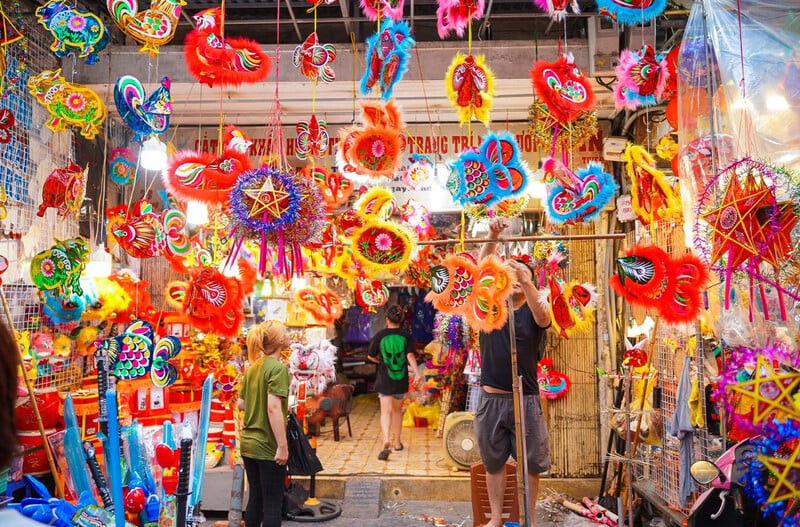
>> Explore more: How Vietnam Celebrates Tet: A Deep Dive into Lunar New Year Traditions
Architecture and Atmosphere: Living History
Architectural Heritage
- Tube House Design: These signature structures developed from tax systems based on street frontage, encouraging narrow facades with deep interiors maximizing usable space while minimizing tax burdens.
- Colonial Influences: French colonial buildings interspersed among Vietnamese structures create architectural dialogues between indigenous traditions and foreign influences.
Atmospheric Qualities
Beyond architecture, the atmosphere itself captivates visitors: motorbike hums, bowl clatters from street vendors, and freshly brewed coffee scents drifting through morning air. Every sound and smell paints authentic portraits of Hanoi’s rhythm, vibrant, chaotic, yet deeply human.
Sensory Experiences:
- Morning markets with fresh produce and flowers
- Café culture with traditional Vietnamese coffee preparations
- Street food aromas from vendors preparing pho, banh mi, and regional specialties
- Evening social life as families gather outside homes for conversation
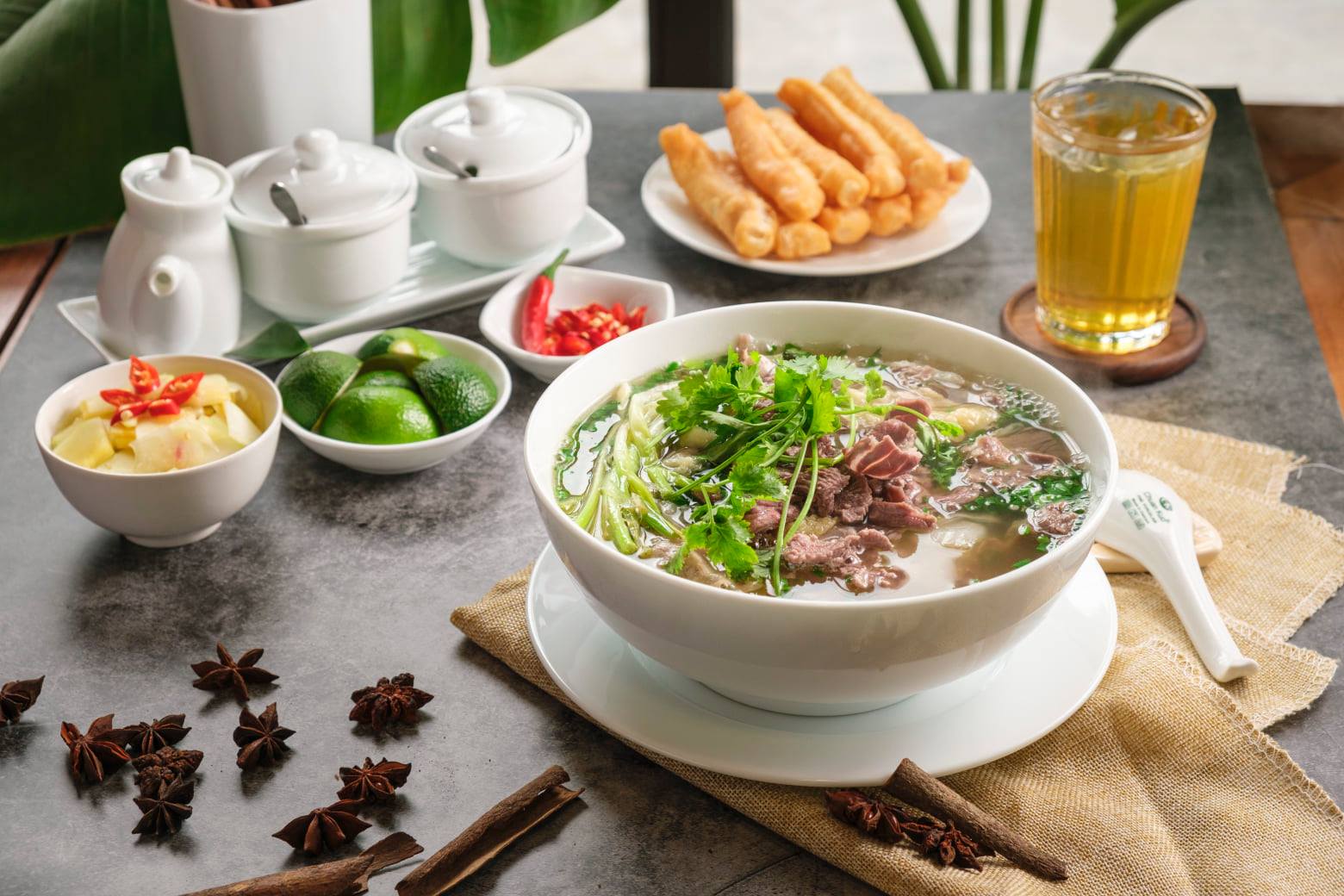
Luxury Within Heritage
For luxury travelers, the Hanoi 36 streets offers more than nostalgia, it presents rare harmony between history and modernity. Amid ancient streets, boutique hotels, fine dining restaurants, and hidden speakeasies allow visitors experiencing past charm without sacrificing contemporary comfort.
This luxury-heritage integration demonstrates how thoughtful development can enhance rather than diminish historic neighborhoods, creating sustainable tourism models that benefit both visitors and local communities.
Essential Experiences Within the 36 Streets
Craft Workshop Visits
You should visit Silk Showrooms on Hang Gai to feel the fabric quality while learning about Vietnamese silk production.
Culinary Discoveries
- Street Food Adventures: Sample authentic Hanoi specialties from vendors maintaining family recipes
- Hidden Cafés: Discover atmospheric coffee shops tucked within narrow alleys
- Fine Dining: Experience contemporary Vietnamese cuisine in restaurants occupying historic buildings
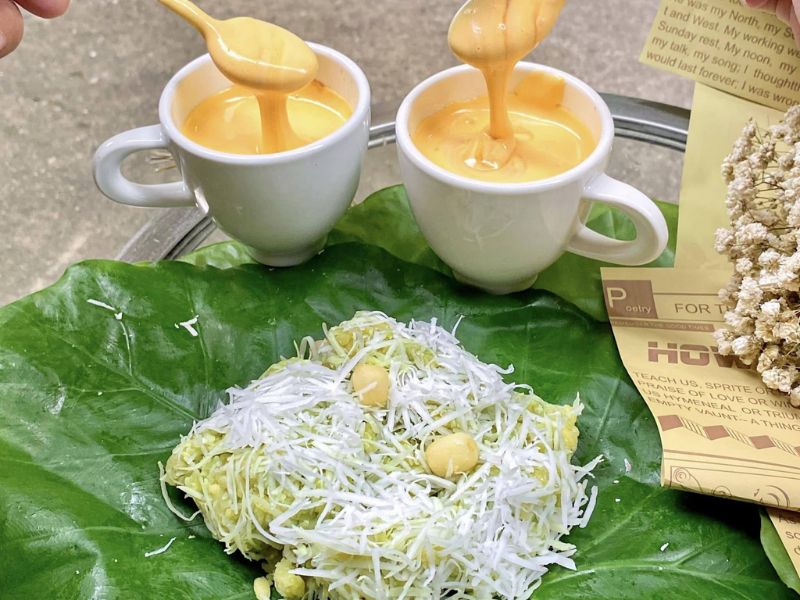
>> Explore more: Hanoi Café Vietnam – The Unforgettable Journey Through Coffee and Culture
Cultural Encounters
- Temple Visits: Explore ancient temples preserving spiritual traditions amid commercial activity
- Art Galleries: View contemporary Vietnamese art in galleries highlighting cultural evolution
- Local Interactions: Engage with shopkeepers and residents sharing neighborhood stories
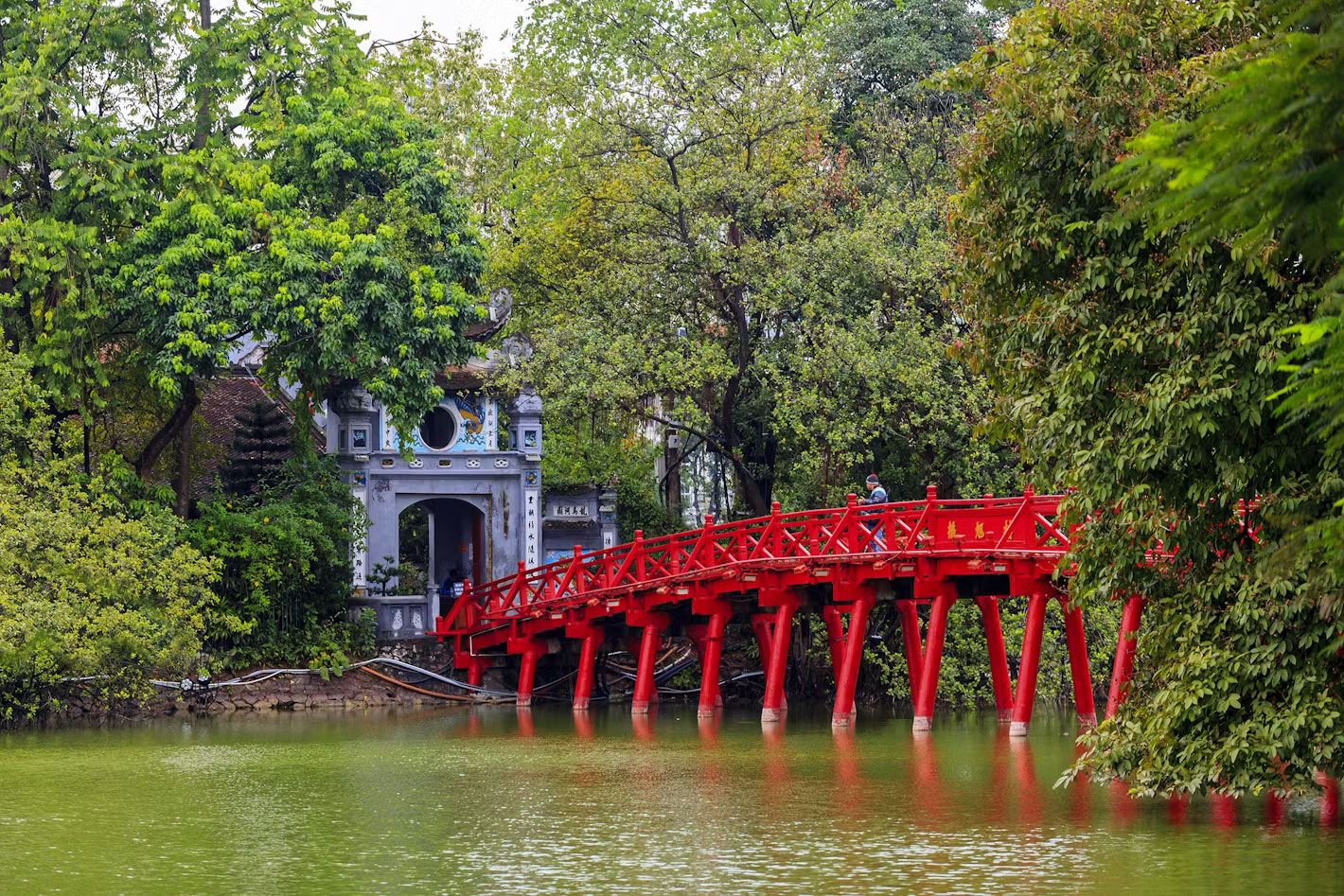
Frequently Asked Questions about the Hanoi 36 streets
Where is the Hanoi 36 Streets area located?
Hanoi’s 36 streets occupy the Old Quarter in Hoan Kiem District, centered around Hoan Kiem Lake extending north toward Long Bien Bridge. Major streets include Hang Bac, Hang Gai, and Hang Ma, all within walking distance of central Hanoi landmarks.
Are the street names still relevant today?
Many streets maintain connections to historical trades, Hang Bac still features jewelry shops, Hang Gai continues as a silk center, though some have evolved to different commercial purposes while retaining traditional names preserving historical memory.
How much time should I allow for a meaningful visit?
Thorough 36 street Hanoi exploration requires 1-2 full days allowing proper attention to shopping, dining, cultural sites, and atmospheric absorption. However, even half-day visits provide meaningful introductions to the area’s character and heritage.
What should I buy in the 36 Streets?
Quality purchases include silver jewelry from Hang Bac, silk products and custom clothing from Hang Gai, traditional ceremonial items from Hang Ma, lacquerware, and contemporary Vietnamese art, all supporting artisan communities while providing meaningful souvenirs.
>> Create unforgettable moments with SJourney on board our luxury train. Reserve your seat early for exclusive benefits. Book directly with SJourney HERE.
Conclusion
The Hanoi 36 streets represents far more than a historic district; it embody a living chronicle of Vietnamese urban culture where centuries of craftsmanship, commercial evolution, and community resilience create neighborhoods that simultaneously preserve heritage and embrace contemporary life.
Begin your Vietnamese cultural journey by exploring Hanoi’s 36 Streets before boarding SJourney’s luxury railway, where ancient guild traditions and contemporary urban life. Contact us today to plan comprehensive Vietnamese adventures combining authentic Old Quarter exploration with sophisticated luxury rail travel through the country’s most captivating landscapes and cultural destinations.
————–
SJourney
Hotline (Phone/whatsapp): +84-975-119-466
Email: inquiry@vietnamluxuryexpress.com
Head office: No. 15/52 Giang Van Minh, Ba Dinh, Hanoi
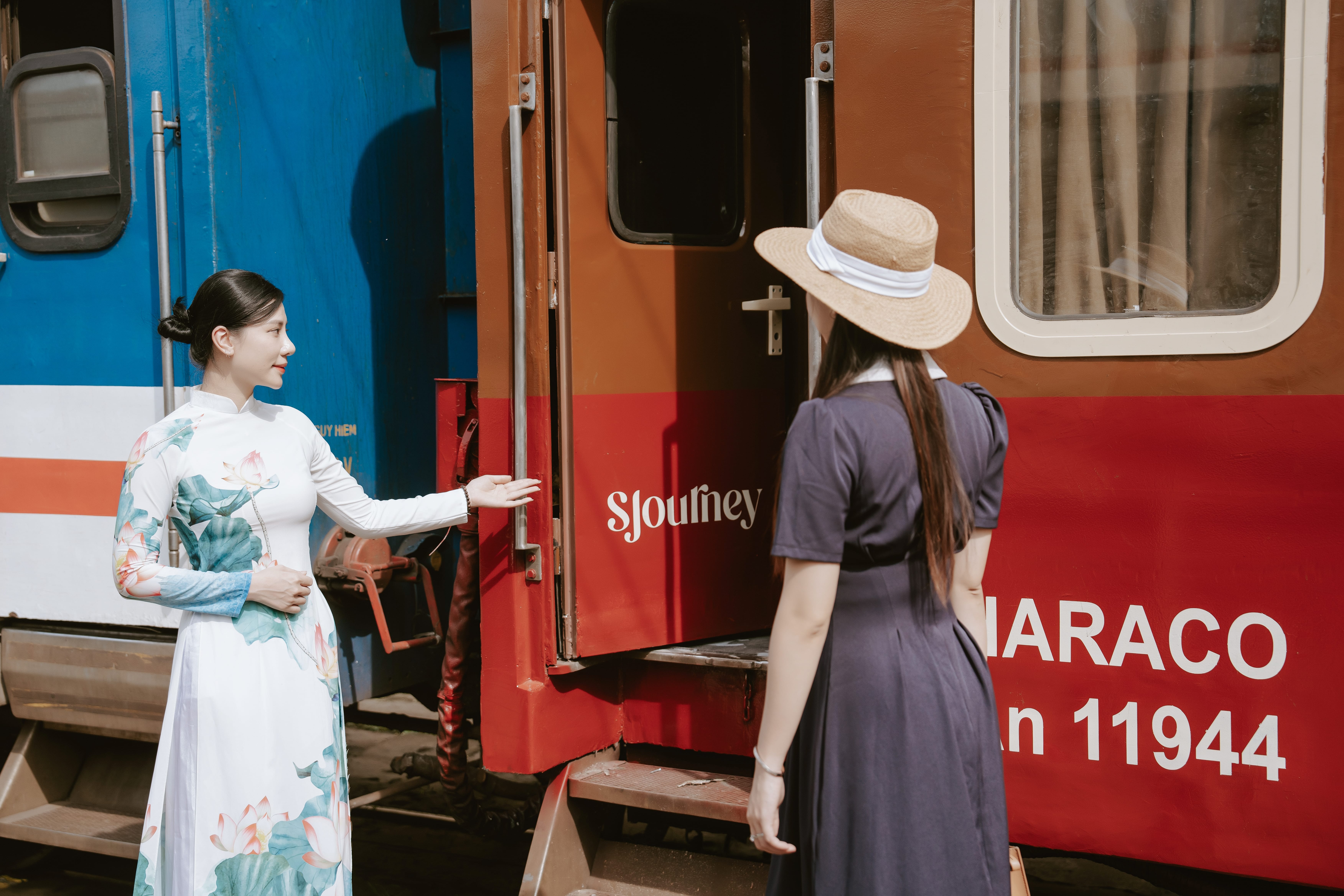
The Travel Story Team is the editorial group behind Vietnam Luxury Express — passionate storytellers and travel enthusiasts dedicated to sharing the art of luxury train journeys across Vietnam.

